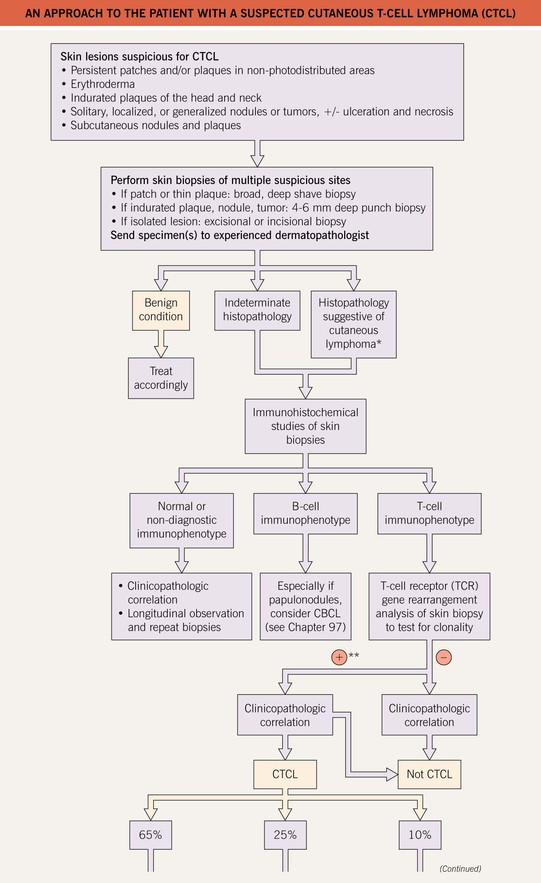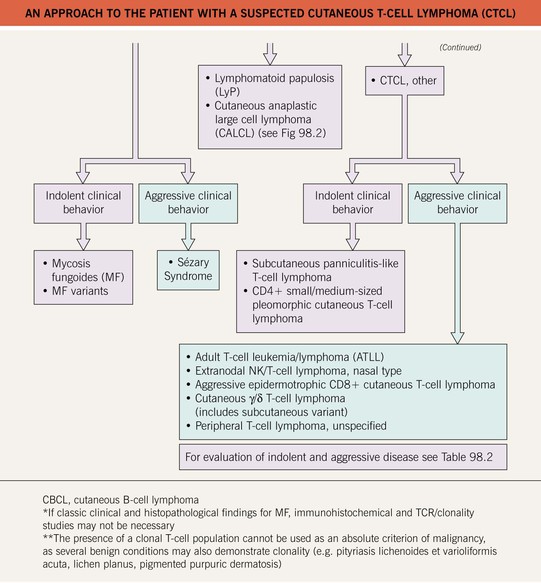98
Cutaneous T-Cell Lymphoma
• The term CTCL will be used herein to describe the heterogeneous group of primary cutaneous lymphomas composed of neoplastic T cells or natural killer (NK) cells (Table 98.1).
Table 98.1
WHO–EORTC classification for and features of cutaneous T-cell lymphomas.
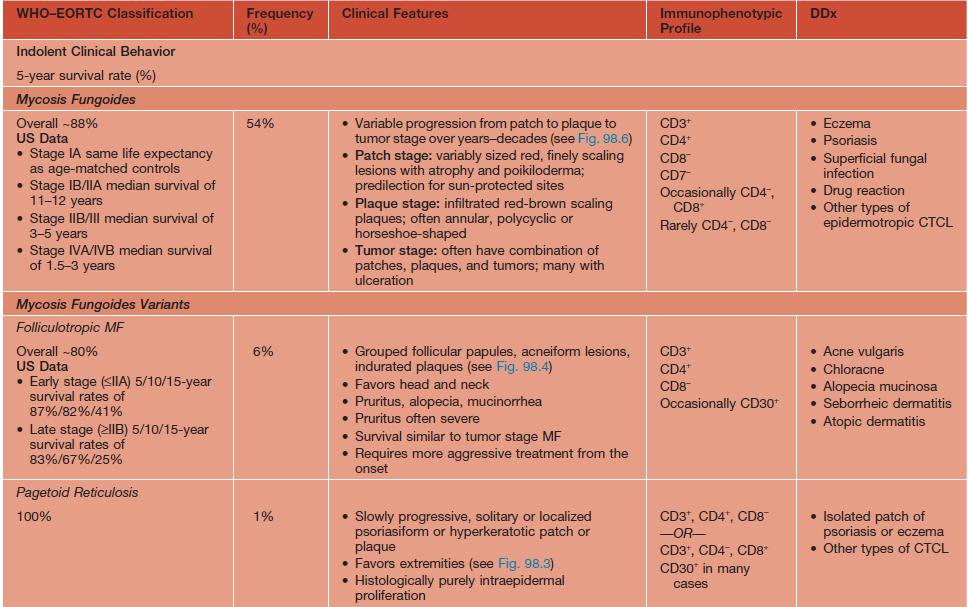
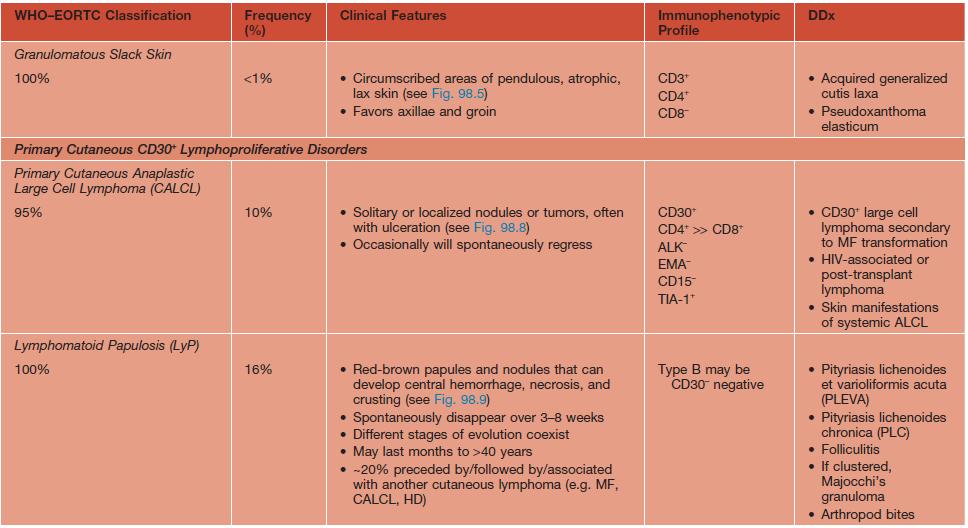
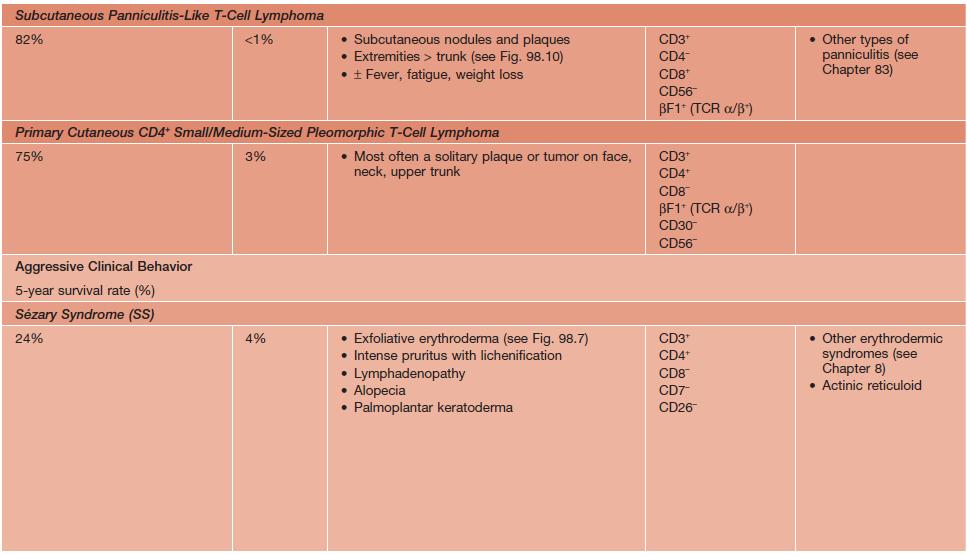
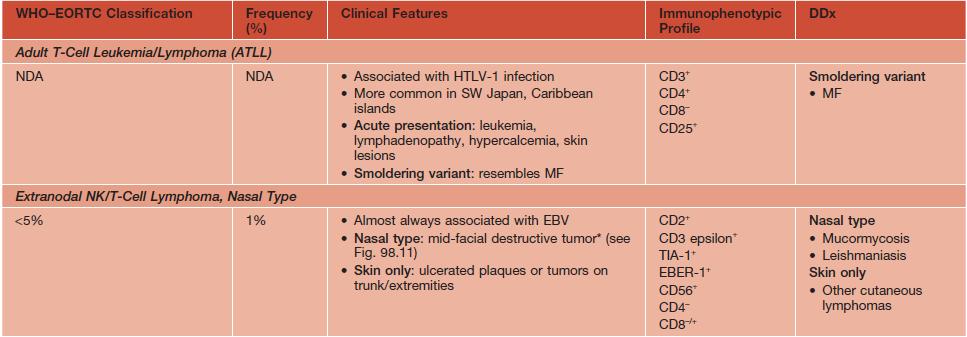
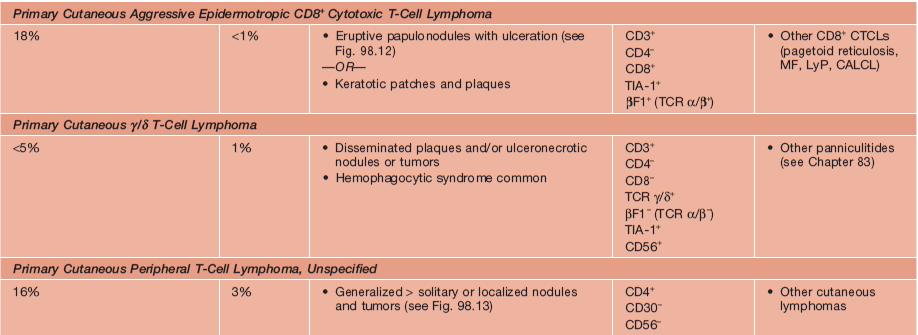
* Previously called lethal midline granuloma.
NDA, no data available; EBV, Epstein-Barr virus; HD, Hodgkin disease; HTLV-1, human T-lymphotrophic virus 1; TCR, T-cell receptor.
• An approach to the evaluation of a patient with suspected CTCL is presented in Fig. 98.1.
